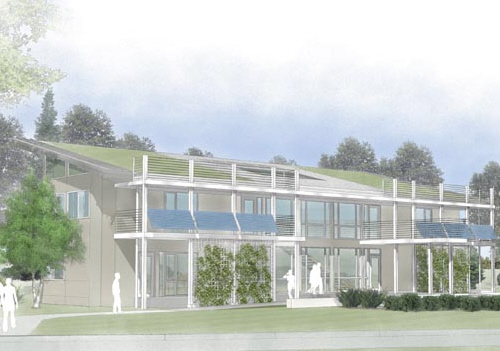 Imagine a college dormitory that touts more audiovisual equipment than most theaters, runs on electricity generated by solar panels and is protected with biometric security. This unique living experience will become a reality for 10 students of Duke Universitys Pratt School of Engineering in the U.S.A. Imagine a college dormitory that touts more audiovisual equipment than most theaters, runs on electricity generated by solar panels and is protected with biometric security. This unique living experience will become a reality for 10 students of Duke Universitys Pratt School of Engineering in the U.S.A.
The university and The Home Depot are partnering to create "The Home Depot Smart Home," a residential laboratory where students will research and develop innovative solutions for the home in areas such as security and home monitoring, communications, energy efficiency, entertainment, environment and health.
"The goal of this program is to provide an immersive and innovative project-based learning environment that students can be involved in throughout their undergraduate careers," said Kristina M. Johnson, dean of the Pratt School. "We also hope to transfer what we learn to homeowners who want to incorporate smart technology into their own homes. We could not ask for a better partner in this than The Home Depot."
Craig Menear, senior vice president of Merchandising at The Home Depot, said his company is proud to sponsor this live-in research laboratory. Our objectives are threefold: to create a home environment that incorporates innovative solutions that simplify life, to better understand the technology behind these solutions and ultimately to bring this technology to the consumer market.
The Home Depots sponsorship is valued at an estimated US$2 million in cash and in-kind donations over a three-year period to cover the cost of the dorm construction.
The 6,000-square-foot house will be located on the universitys Central Campus. Construction has begun, and the house is expected to be completed by fall 2007. Bovis Lend Lease, based in Raleigh, N.C., is the contractor for the project.
The facility will be a combination residence hall, undergraduate research laboratory and engineering outreach project that will house 10 upper-class engineering students each year. It will serve as a technology prototype assembly and testing center where students -- including the dorm residents, more than 100 student members of the Duke Smart House Club and entire engineering classes -- can test new residential technology ideas developed by Duke students. The occupants will live with (and in) the design ideas of the larger group to provide feedback on issues such as technology usability and adoption, energy efficiency and automated control.
In a smart home, technology is used to anticipate the wide range of residents needs (from security to shower temperature to surround-sound stereo), minimize waste, maximize reuse and recycling, and enhance quality of life.
The Home Depot Smart Home will be dedicated to the study of technology that enhances energy efficiency, automation, quality of life, safety and environmental sustainability, Johnson said. "Students will experience the successes and pitfalls of what they create, and thata part of what makes the program so exciting to students and to industry," she said.
Tom Rose, the houses director and a 2005 Pratt School graduate, said the program creates opportunity for industry/university partnering. "Student projects with industry collaboration are very powerful," he said. "They provide students with real-world experience in design innovation while providing industrial partners with the creative minds of students and a unique opportunity to showcase and market their technology.
"This facility is a new model for engineering education, where undergraduates are challenged to take the lead in interdisciplinary, hands-on research and development," Rose added. " In the next 10 years, Id like to see other universities all over the country use our model to help create their own hands-on, project-based programs."
Rose said embedded sensors in the house will deliver information in real time, "making the house feel like a living organism." Many of the dorms systems, such as wire and pipe, will be accessible using nothing more than a screwdriver -- simplifying installations and maintenance. Other features will include cisterns that capture and reuse rainwater and solar panels that track the sun through the day, increasing their efficiency by more than 100 percent.
Pratt has been working toward the construction of the facility since 2003. What started as an idea by then-electrical engineering student Mark Younger soon gained broad support at Duke. Upon graduation, Younger was hired as the project director, and he shepherded the program through the design process.
To date, more than 225 students have worked on smart home technology and sustainable building projects, many of which yielded insight that went into the design of the facility itself. Student groups are structured to meet project goals that require cross-disciplinary engineering teams that include biomedical, civil, electrical and mechanical engineering students. "For students working on the project, learning to thrive on teams of people with different backgrounds is crucial to the learning experience," Rose said.
The dorm has been designed to meet LEED (Leadership in Energy and Environmental Design) green building standards. LEED is a voluntary, consensus-based national standard for developing high-performance, sustainable buildings.
For more info., contact to email swm@infothe.com
ⓒ2007 www.SecurityWorldmag.com. All rights reserved. |



